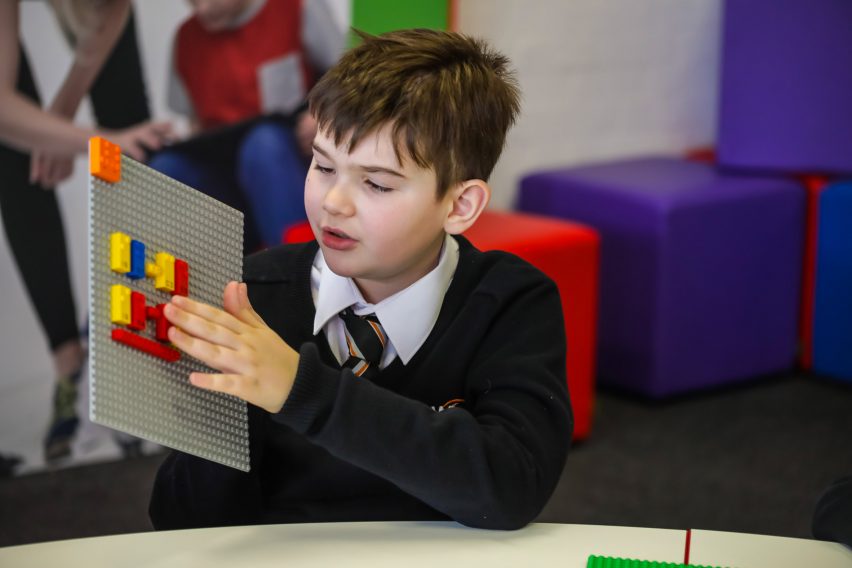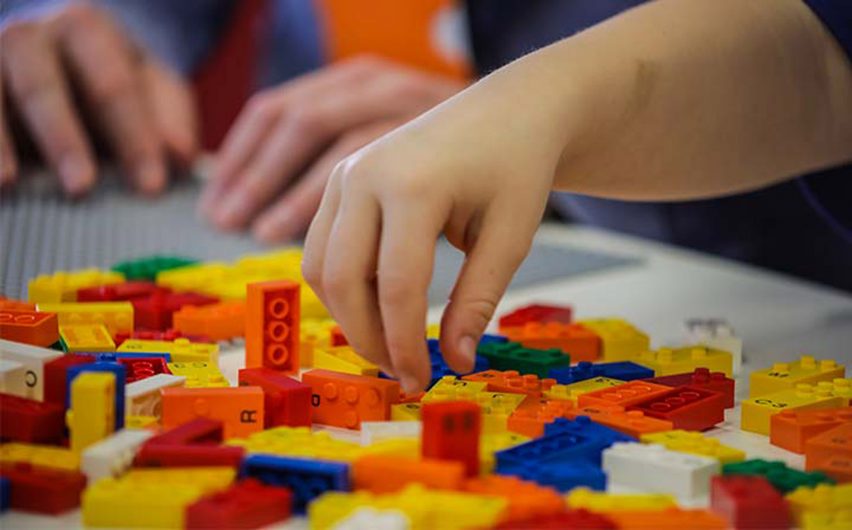Lego launches Braille Bricks for blind and partially sighted children
Lego has created a version of its building bricks printed with letters and numbers from the braille alphabet, so blind and partially sighted children can learn to read as they play.
Presented this week at the Sustainable Brands Conference in Paris, the Braille Bricks feature the same number of studs used for individual letters, numbers and symbols in the Braille alphabet.
The bricks, which are compatible with Lego's wider collection, are also printed with standard numbers, symbols and letters. This means that teachers, friends and family members can play along.
Playful approach to learning Braille
There are 250 bricks in total, covering the full alphabet, numbers between zero and nine, and a selection mathematical symbols.
It is hoped that the interactive nature of the design will give children with visual impairments an opportunity to develop new skills.

"Blind and visually impaired children have dreams and aspirations for their future just as sighted children," said John Goodwin, CEO of the LEGO Foundation. "They have the same desire and need to explore the world and socialise through play, but often face involuntary isolation as a consequence of exclusion from activities.
"With this project, we are bringing a playful and inclusive approach to learning Braille to children. I hope children, parents, caregivers, teachers and practitioners worldwide will be as excited as we are, and we can't wait to see the positive impact."
Could improve employment prospects
The idea behind the product was first proposed to Lego in 2011 by the Danish Association of the Blind, and again a few years later, by the Dorina Nowill Foundation for the Blind.
According to research by the World Health Organisation, there are more 19 million children with visual impairments around the world.
This, coupled with research from the European Disability Forum and European Blind Union that states 75 per cent of European adults with sight-related disabilities are unemployed, reinforces the importance the project could have.
"With thousands of audiobooks and computer programs now available, fewer kids are learning to read Braille," said Philippe Chazal, treasurer of the European Blind Union.
"This is particularly critical when we know that Braille users often are more independent, have a higher level of education and better employment opportunities," he explained.
"We strongly believe Lego Braille Bricks can help boost the level of interest in learning Braille, so we're thrilled that the Lego Foundation is making it possible to further this concept and bring it to children around the world."
Samples out for free trial
Lego is working closely with associations for the blind in Denmark, Brazil, UK and Norway, which have been given samples of the Lego kits to trial free of charge.
The product is currently available in Danish, Norwegian, English and Portuguese alphabets. French, Spanish and German alphabets will be tested later this year.
The final Braille Bricks collection will launch officially in 2020 and will be distributed for free to select institutions.

The project is being led by Lego senior art director Morten Bonde, who himself is partially blind.
"Experiencing reactions from both students and teachers to Lego Braille Bricks has been hugely inspirational and reminded me that the only limitations I will meet in life are those I create in my mind," said Bonde.
"The children's level of engagement and their interest in being independent and included on equal terms in society is so evident. I am moved to see the impact this product has on developing blind and visually impaired children's academic confidence and curiosity already in its infant days.
Last year, Lego released a variation of its signature building bricks out of plant-based plastic, sourced from sugar cane.